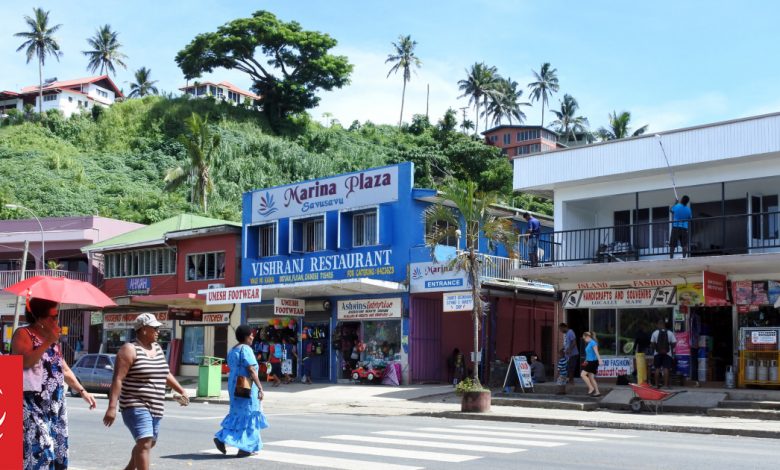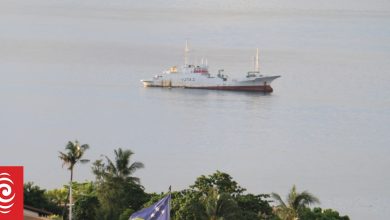Moderate growth expected in the Pacific region in 2024 – ADB

According to the Asian Development Outlook (ADO) April 2024, ADB’s flagship economic publication, released on Thursday, Pacific economies expanded by an average of 3.5 percent in 2023 as business activity resumed in earnest after the Cocvid-19 pandemic.
“Growth of 3.3 percent is projected in 2024 and 4.0 percent in 2025. The outlook is driven by improved prospects for the mining sector in Papua New Guinea (PNG), the subregion’s largest economy,” the ADB said.
However, ADB’s director-general for the Pacific, Leah Gutierrez, said while large construction projects and tourism continue to drive growth in many Pacific economies, risks to the outlook remain.
“To achieve and maintain growth, targeted policies are urgently needed to address labor gaps while sustaining remittance flows and balance fiscal sustainability with long-term investment. Governments must also find ways to improve resilience to shocks, especially with the increasing threat of disasters and the impacts of climate change,” she said.
The ADO says after moderating to 3.0 percent in 2023, inflation in the Pacific will rise by 4.3 percent in 2024 and 4.1 percent in 2025. Although global commodity prices are seen to be less volatile, domestic factors exert price pressures in many economies.
Papau New Guinea
In PNG, growth slowed to 2.0 percent in 2023 due to decreased production in the resource sector. Foreign exchange restrictions and frequent power disruptions also dampened activity in the rest of the economy. The resumption of production at the Porgera gold mine will accelerate growth in 2024 to 3.3 percent and 4.6 percent in 2025.
The fallout from civil unrest in January this year and a poor business environment continue to cloud the outlook. Reforms to improve the power sector’s financial sustainability and generation infrastructure, including increased use of renewable energy and private sector investment, are needed to help address power supply constraints on growth.
Fiji
For Fiji, the subregion’s second-largest economy, tourism and increased remittances will continue as the main drivers of growth in 2024. Growth is projected to slow to 3.0 percent in 2024 and further to 2.7 percent in 2025, largely due to the projected slowdown in travel demand and significant capacity limits in tourism. Sustaining tourism growth will require boosting investment, promoting tourism activity in other areas, particularly in the outer islands, and attracting other segments of tourism markets.
Solomon Islands
The ADO April 2024 expects growth in Solomon Islands to moderate slightly to 2.2 percent in both 2024 and 2025 as activities related to the 2023 Pacific Games wind down. The report says public debt is projected to increase-but remain within government limits-to finance infrastructure and budget deficits, while inflation would decelerate in line with global trends. Balancing fiscal sustainability with long-term investment needs is an ongoing challenge.
Vanuatu
Economic growth in Vanuatu is projected at 3.1 percent in 2024, rising further to 3.6 percent in 2025. It is expected to depend on tourism growth and reconstruction in the aftermath of three cyclones that damaged infrastructure and agriculture in 2023. The report says that with the rising intensity and frequency of climate-induced disasters, alternative ways to finance disaster preparedness and response must be found.
Cook Islands, Samoa, Tonga, Niue
Tourism, as well as construction-mainly public infrastructure projects-will sustain growth in the South Pacific economies over the near term. Growth in the Cook Islands will reach 9.1 percent in 2024, moderating to 5.2 percent in 2025, while expansion in the tourism and construction sectors in Samoa is projected to put growth there at 4.2 percent in 2024 and 4.0 percent in 2025.
Ongoing construction activities and investments in climate resilience will continue to support growth in Tonga, which is projected at 2.6 percent in 2024 and 2.3 percent in 2025. Niue’s economy improved in 2024 due to a pick-up in tourism. However, visitor arrivals remained well below pre-pandemic levels. The ADB report says policies must balance the need to address local labor gaps with sustaining remittance flows to maintain growth.
North Pacific
The North Pacific economies improved as visitor arrivals to Palau increased, and business activity picked up in the Federated States of Micronesia (FSM) and the Marshall Islands during their first full year without pandemic-related mobility restrictions. Growth in the FSM economy is projected at 3.1 percent in 2024, moderating slightly to 2.8 percent in 2025. The Marshall Islands economy is projected to expand by 2.7 percent in 2024 and 1.7 percent in 2025.
Growth is expected to resume in Palau, driven by tourism and construction, reaching 6.5 percent in 2024 then increasing to 8.0 percent in 2025. Stronger public sector management remains key to using the financial assistance anticipated under the North Pacific economies’ renewed Compacts of Free Association with the United States to upscale productive investments, improve the quality of public services, and build resilience.
Kiribati, Tuvalu, Nauru
Implementation of infrastructure projects is seen to drive economic expansion in the Central Pacific economies. Growth in Kiribati is projected at 5.3 percent in 2024 and 3.5 percent in 2025, while the forecast for Tuvalu is 3.5 perecent in 2024 and 2.4 percent in 2025.
After the winding down of the Australia-funded Regional Processing Centre, construction, as well as services exports, are seen to fuel the Nauru economy. Growth is projected at 1.8 percent in 2024, edging up to 2.0 percent in 2025. As rising sea levels threaten the livelihoods and the very existence of the Central Pacific economies, the report says immediate and concerted efforts to mitigate this threat are needed.
- Full report here
- Summary highlights here.
According to the news on Radio New Zealand




